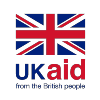At the beginning of March, the CLARISSA Nepal team worked with children to support the collection of their life stories. The training was prepared in a child and disability friendly manner and with absolutely no PowerPoint presentations! We made the sessions as interactive as possible and the participatory approach resulted in the active engagement and inclusion of all children during the process.

Keeping the children engaged
Most of the sessions were designed to ensure active engagement of children during discussion and to share ideas in small buzz groups. Different multimedia tools like videos, photos and interactive discussion were used while delivering the sessions incorporating different team games and energisers.
In one of the training sessions, the children were taught about about the importance of their participation in these processes. The session included brief introduction about the concept followed by the group work where children in four different groups required constructing a tower using available materials. The objective of the session was to aware children about different aspects of participation which included accepting the differences, encouraging healthy arguments, promoting team integrity, making mutual decision and coordination. The team later explained about the challenges and efforts made for completing the tower.
Learning about the life story collection process
The major focus of the training was to inform the participants on the life story collection process. For this the children were divided into trios and a mock exercise on story collection was conducted. The children in the group moved between the role of storyteller, facilitator, and documenter, while the CLARISSA staff supported them by reviewing and reflecting after completion of each story.

We did three different sessions to practice the life story collection process. By the end of the sessions, the children expressed their confidence on collecting the stories from other children who are also engaged in the worst forms of child labour. Peer to peer discussion and support was highly encouraged throughout the whole training. This approach allowed children to comfortably share their experiences and ideas with their peers for collection and learn about the production of a well-documented and informative story.
The importance of a child-centered approach
We did three different sessions to practice the life story collection process. By the end of the sessions, the children expressed their confidence on collecting the stories from other children who are also engaged in the worst forms of child labour. Peer to peer discussion and support was highly encouraged throughout the whole training. This approach allowed children to comfortably share their experiences and ideas with their peers for collection and learn about the production of a well-documented and informative story.
The children also participated in developing the different forms and tools to be used during upcoming story collection process. The terminologies used in the forms have been included based on their understanding and knowledge.
The child centered approach has helped in boosting the confidence of the children. Initially, some of them were reluctant and shy in speaking or participating in group discussions and activities. The CLARISSA team were sensitive to the experiences and anxieties that many of these children are facing. They supported the children individually, building rapport and trust.
As the training progressed, the same children were actively engaged in group discussion and were also presenting the outcomes of group discussion in plenary. The role of different group members was also important for this as they provided the time and space for such introvert children to open and encouraged them for their active participation.
Ultimately, working with children to bring in their views and experiences will shape the path forward for CLARISSA. This is why the child-centered and participation approach are the foundations of the consortium and we are beginning to collect the stories that not only need to be told, but will inform the CLARISSA programme in Nepal.
